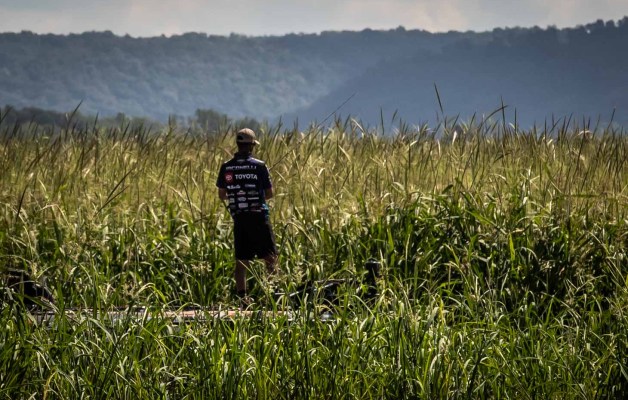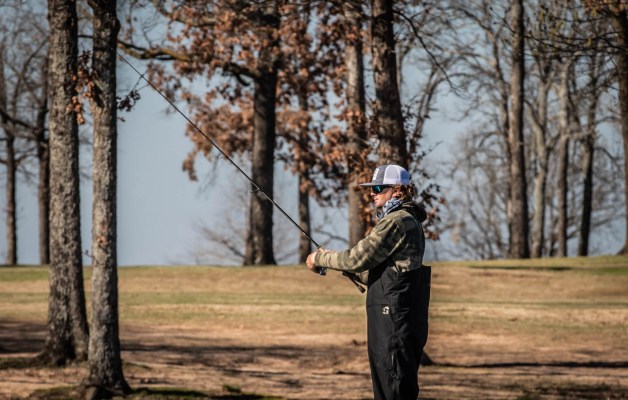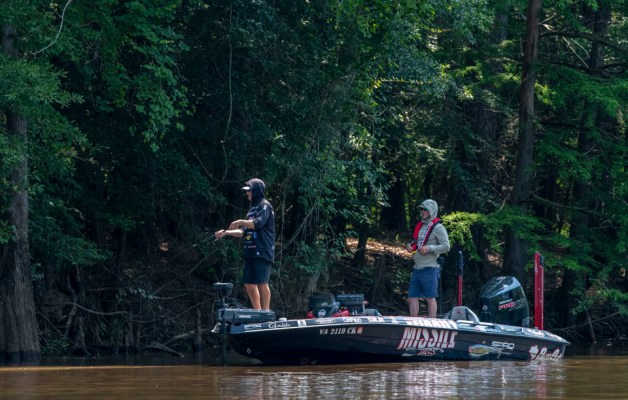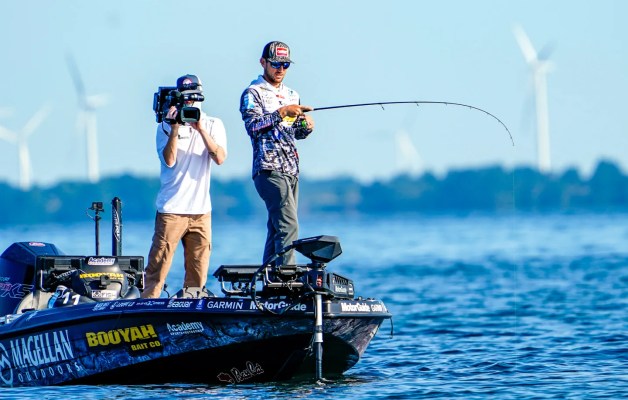Fall brings a lot of opportunities for some of the year’s most exciting patterns. One of my favorites is topwater fishing. The fish seem to be eating well and the action can be awesome.
I like throwing topwaters because they let me cover a lot of water. I can put the trolling motor on high and just buzz along the bank.
One of the reasons this can be such a productive approach is that drawdowns that occur during fall tend to create a good scenario for the fish and the fishermen.
Basically, your reservoirs are pulled down in the fall for winter pool. This allows homeowners and local authorities to work on docks, seawalls, dams, etc.
Natural weather cycles will also cause lower water levels in natural lakes, like Lake Ten Killer near my home. In normal years, this lake can be 3 to 4 feet low in the fall.
One thing to keep in mind is that a drawdown may affect some lakes more than others. Lakes that are really flat like some of the Tennessee River lakes will be affected more than one with steeper banks like a Table Rock.
If the water drops 4 feet on a steep lake, you take away a lot of acres of water. The more acres you take away, the more concentrated the fish become.
Lakes with flatter banks also see the fish becoming more concentrated and that’s one of the major benefits of the fall drawdown – in any type of lake, lower water level limits a lot of the shoreline cover. That means the remaining cover is more likely to hold fish.
That might be a laydown that loses most of its water or a brush pile that was placed too shallow. Whatever the case may be, drawdowns concentrate fish in less water.
For a fisherman, that cuts down on the search time. When a lake is full the fish spread out. They might be on targets you can see or targets you can’t see, but you end up having to fish more spots to find them.
Once the drawdown starts, those fish will gang up on whatever structure remains. That’s going to give any laydown, log, rocks or docks you come to a lot more potential.
In the fall, you might go down a log and catch one on a squarebill and you can come back to that same spot and hour later and catch another one. Sometimes, you can catch multiple fish on repetitive casts.
It seems like in the fall, if you catch one, there’s usually more there to be caught. And since the fish often crowd around the cover that’s still deep enough for them, you have more feeding competition this time of year.
One of the things I like best about fall is the ability to ride around and see what different areas look like when the water’s lower. I’ll check out the areas I fish and explore new spots to see where the cover is situated.
If you haven’t been to a lake in a while, a drawdown is a good time to go. You can see the shallow rocks, logs, brush and anything else that looks good.
I have a rule: If it looks good, it probably is good. That’s why I use the fall drawdown to mark a lot of new spots that I’ll come back and fish the following year during normal water levels.
I’m not usually all that picky when I’m identifying exposed structure that I’ll return and fish the following year, but I am a little more specific about the spots I fish during the current fall season. You can catch them on just about any type of structure, but as far as location, I like spots closest to deep water.
I feel like the bite is going to last a lot longer in these areas because, as the weather gets cooler, those fish are starting to think about moving out to their deeper winter spots.
If you’re catching fish in the back of a creek, those fish are going to leave when it gets cooler. But if you’re catching the somewhere with deep water close by, they’re more likely to stay there a week or two.
Getting back to those topwater baits, I keep a Heddon One Knocker Spook and a Booyah Boss Pop on my deck. Some days in the fall, you might be catching them on one or the other, so you want to be ready for whatever the fish want.
To wrap this up, remember that not only does the drawdown concentrate the fish, it concentrates the bait. Fall is the season when bass feed up for the winter, so look for the bait schools and you’ll find your drawdown bass.





